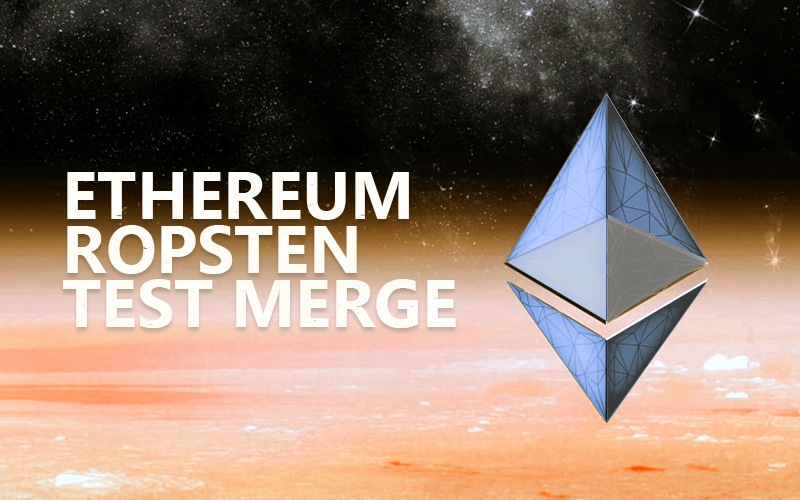As time is passing, the Ethereum Merge is getting closer. According to the scheduled merge, Ethereum successfully completed its very first dress rehearsal on the Ropsten testnet merge on June 8, which transit its PoW consensus mechanism into PoS.
Ethereum’s core developer, Tim Beiko, announced the Ropsten testnet merge date, which was configured into two different parts: Bellatrix upgrade and identification of the Terminal Total Difficulty (TTD) value.
After the Bellatrix upgrade on June 2, the actual testnet merge rolled out on June 3. The purpose behind this merge was to comprehend the post-merge scenario on the Ethereum mainnet.
Also, the merge is identical to checking whether client software using Ethereum nodes performs without any glitches.
Many client software teams have participated in the first PoS testnet merge including Lighthouse, Lodestar, Prysm, Teku, Besu, Erigon, go-ethereum (geth) and Nethermind.
Similar to the Ropsten merge, two more testnet merges namely ‘Goeril’ and ‘Sepoli’ are planned before the Ethereum Merge.
Yesterday’s merge was the first dress rehearsal for the Ethereum Merge that diluted Ropsten’s PoW execution layer with the Beacon Chain PoS consensus chain.
“I mean of course, the merge working well for 6 hours isn’t evidence of complete success,” said Vitalik Buterin, co-founder of Ethereum, in the livestream earlier today.
“There are all of these kind of longer term issues around MEV and staking centralization and protection against DOS attacks and things that could potentially bite us 3 weeks after the merge instead of 2 minutes during the process.”
For the execution of the testnet merge, developers have set the TTD value at 50 quadrillions. The reason behind this high TTD value was the low PoW hash rate on testnets.
As per the Ethereum validator Paritosh’s tweet, the testnet merge was completed 2 hours after the scheduled time at around 16:00 UTC. He quoted that the merge was executed with great accuracy with a 99.2% participation rate.
However, the participation percentage dropped by 13% after the configure issue occurred on the Nimbus team’s nodes. The Nethermind team also found out the bug that was fixed after a simple restart.
For the safe side, validators will monitor the chain for the next few weeks to ensure that client pairs properly sync. Also, they asked the community to raise warnings about dApps and tooling.
Paritosh revealed that “some client pairs timeout while building a block and propose with 0 transactions in them”, which can affect the throughput of the chain. A similar issue was also prompted in Shadow forks.
Also Read : Ethereum’s First Mainnet Shadow Fork Turns Out to be Successful
The Ethereum community expects that Ethereum’s transition from PoW into PoS will improve its scalability and reduce transaction costs (gas fees) on the network.






